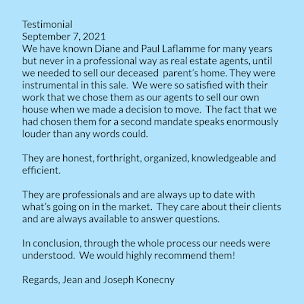 |
For the wealthy, and those who aspire to be, investing in real estate can reduce risk and volatility in a portfolio.
Those
with the money have myriad ways to play real estate. Some are easy,
some are challenging. Here are a few, and their possible risks.
Individual commercial properties
One
of the most basic ways to invest in real estate is to buy a small
commercial building. Some business owners and professionals prefer to
own their work space and rent out an extra office or apartment upstairs
to help cover costs.
When mural artist Katherine Sunita first
stepped into the 120-year-old, double storefront on the main drag in St.
Catharines, Ont., she just had to have it. It’s the kind of building
that brings out the dreamer in people.
In
the 2,000-square-foot main floor, with its soaring tin ceiling, big
windows and hardwood floors, Ms. Sunita imagined a group of artists
painting, teaching classes and displaying their work.
Her
contractor husband, Goran Mohar, was taken, too. He saw a place to
showcase his environmentally friendly building materials, and a meeting
hall where like-minded people could get together to discuss sustainable
ways of living.
How long had Ms. Sunita been looking?
“All my life,” she says. They are both in
their mid-30s. While they won’t say what they paid for it, Jordan Clark,
their real estate agent, says the building – which for 50 years housed a
craft and hobby shop – was a steal.
The
former hobby shop also charmed teacher Melisa Parkins and her husband
Stuart Hillman, so much so that they bought the adjacent storefront. It
had been part of the hobby shop but is now a separate property.
Their
goal, inspired by a volunteer stint in Guatemala, is to open a shop to
showcase local and fair trade arts, crafts and jewellery. More than a
year later, they are behind schedule and losing track of the renovation
costs, but rental income from two upstairs apartments keeps the project
afloat. “Without that, we couldn’t have done it,” Ms. Parkins says.
Burgeoning
costs have Mr. Mohar worried, too. In a little over a year, he has
spent $150,000 over and above the purchase price, and he’ll need that
much or more to complete the renovation. The 1,800-square-foot upstairs
has been taken down to the rafters.
As a
backstop, he and Ms. Sunita have listed the building for sale. “We
really don’t want to sell it,” he says. She agrees. A hopeful sign: The
listing is attracting potential lessees – just in case the art space
doesn’t work out.
The risks:
Falling in love with a property and underestimating the time and money a
renovation will take, resulting in a cash-flow squeeze.
Neighbourhood strip malls and apartment buildings
Traditionally,
these investments have been low-risk for buyers who like control, are
well-capitalized, have a long time horizon and manage them well. They
offer an alternative to a registered retirement savings plan (RRSP) or
pension fund because income jumps once the mortgage is paid off.
Buying
right is key. “As an investor, you have to avoid getting caught up in
the frenzy” of a hot real estate market, says Don Campbell, author,
analyst and founding partner of the Real Estate Investment Network, or
REIN. “Ask yourself, where is my money going to work hardest for me?”
REIN produces what it calls a “property
gold-mine scorecard” to help members compare potential investments
across the country. Key demographic drivers to check include population
growth, low vacancy rates, job growth and improvements to
transportation. The key financial drivers are return on investment
(rental income over market price), household income and growth in gross
domestic product.
Another key number is
the capitalization rate. The cap rate is the percentage you would make
on your money if you had paid cash for the property. Return on
investment, or ROI, is what your return is when you factor in any
financing. The higher the risk inherent in the property, the higher the
cap rate should be. For a run-down building that needs renovation, you’d
want a cap rate of 20 per cent or so, whereas a fully rented one might
have a cap rate of 8 per cent.
The risks:
Paying too much or failing to set aside enough money each year to keep
the building in good repair. If a building becomes shabby, tenants move
out and you have difficulty attracting new ones.
Private REITS
Investors
are attracted to real estate investment trusts for their yield, but a
look at the five-year history of the iShares S&P/TSX Capped REIT
Index exchange-traded fund shows how volatile the publicly traded REITs
can be.
Wealthy investors have the
option of investing in private REITs, which are not traded on the stock
market. In doing so, they give up liquidity for stability and safety of
capital.
One example is the Centurion
Apartment Real Estate Investment Trust, which has a minimum investment
of $25,000 and is sold under an offering memorandum to high-net-worth
investors.
“With a private REIT, you
own what you own, there is no mark-to-market,” says Craig Machel, a
portfolio manager at Richardson GMP in Toronto. The value of publicly
traded REITs, in contrast, fluctuates with the stock market. When you
sell, you get your pro-rata share of the buildings’ value. While private
REITs are intended to be long term, the Centurion REIT has a monthly
redemption window.
The risk: REITs, which
are essentially property funds, will be hurt if property prices fall, or
if the income the portfolio generates falls because of a weak economy.
In the worst case, the redemption window could slam shut and it could
take a long time to get your money back. “You need to be conscious of
liquidity risk,” Mr. Machel says.
Private limited partnerships
Limited
partnerships have been sprouting like mushrooms, with some being formed
to develop a single property, such as a high-rise condominium. These
are risky, analysts say, because of their lack of diversification and
sometimes less-than-professional management.
“Management
is huge in these things,” says Mr. Machel. Management must be
experienced and their needs must be aligned with those of their
investors, he says. “You like to know the biggest owners are management
and that they’re going to stick with the fund.”
For
experienced management, broad diversification and potentially high
returns, very wealthy investors can turn to private funds offered by
Brookfield Property Partners LP, among others. Brookfield Property is a
limited partnership that trades in Toronto and New York.
Brookfield
Property’s offerings for high-net-worth and institutional investors
include its Global Opportunistic Real Estate, U.S. Multifamily Value-Add
Real Estate, and U.S. Open-End Core-Plus Real Estate funds.
The
publicly traded parent, Brookfield Property Partners, pays
distributions quarterly and yields about 5 per cent based on the current
unit price. The units can be sold at any time. Its private funds, in
contrast, usually have a specified fund life, generally about 10 years,
says Matthew Cherry, vice-president, investor relations and
communications, at Brookfield Property in New York.
“In the private vehicles, distributions are not as predictable and regular,” he says.
The risks:
Because you are an actual partner, you can lose money if something
unexpected happens. You are depending entirely on the skill, experience
and integrity of the managing partner, so choosing wisely is critical.
Mortgage pools
High-net-worth
individuals have the option of participating in mortgage offerings,
usually commercial loans, that are not available to smaller investors.
The private pools tend to be larger and better diversified because they
include institutional investors, who like them because they are more
stable than stocks and bonds.
The risks:
Returns could fall as low interest rates squeeze lending margins. There
is also a liquidity risk: The economy could flop, borrowers could
default and your money could be tied up longer than you anticipated.
http://ofsys.com/T/OFC4/L2S/6384/B2726171/kCM3/742512/28037512/jMo4yE/1/4141758/5Oowfc0N/I/755530/D4uxaU.html































